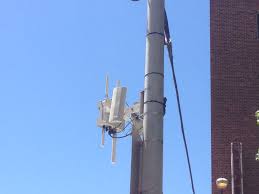Our industry takes it as general wisdom that urban areas have better broadband than rural areas, and as a general premise it’s true. But within urban areas, the segment of the community with the widest range of broadband coverage are apartment buildings. I think you can go to every big city and find some apartments with gigabit speeds while other apartment buildings have little or no broadband.
There are several reasons for the wide variance in broadband coverage. First, landlords have always had a say about what carriers they will allow in their buildings. I’ve seen numerous cases of landlords that include slow broadband into the rent and don’t let faster ISPs into their building. Some buildings don’t have broadband due to what can only be described as redlining where ISPs avoided poor or troubled neighborhoods. Finally, some older apartment buildings are expensive to rewire due to the way they were originally constructed.
The City of Seattle is tackling the issue in an interesting way. Over half of the living units in the city are in MDU’s (multi-dwelling units), meaning apartments, condominiums, and townhouses. In 2019 almost 81% of new units built in the city are in MDUs. The city views the ability of MDU tenants to have the same broadband quality and options as single family homes as a digital equity issue.
The city has been gathering facts about MDU broadband for several years and came to understand the wide variance of broadband in different buildings. They found that MDUs routinely don’t have the same broadband options as nearby single-family homes. The city conducted a survey in 2017 that found that 95% of MDU tenants have access to broadband of at least 25/3 Mbps. However, the survey found that few tenants in the city have a competitive choice between multiple ISPs at speeds of 100 Mbps or faster. The tenants who have the choice of multiple fast ISPs were the most satisfied with their broadband. The city concluded from the survey that choice was just as important to MDU tenants as broadband speeds.
Probably the most important finding of Seattle’s research is that there is a wide variance among landlords in terms of understanding their broadband options. They found landlords who know very little about broadband up to landlords that have sophisticated tech plans. The city found that many landlords have relied on the advice from ISPs – which clearly can be self-serving and not in the benefit of landlords and tenants.
The city concluded that one way that they could help improve MDU broadband was by helping to educate landlords. The Seattle Office of Cable Communications launched an initiative they call B4B – Build for Broadband. Their goal is to create awareness of the importance of broadband for landlords and to provide educational content for the many landlords that can’t afford telecom planners and consultants.
The city has undertaken an initiative to provide information about broadband to landlords. They’ve started a series of webinars covering topics of interest to landlords. I should disclose that I helped the city with a webinar that compared wired and wireless technologies. The city is also gathering other information for landlords on their website.
This initiative makes a lot of sense in Seattle since it has one of the highest percentages of MDU residents in the country. However, any city that has MDUs could consider something similar. I’ve done broadband feasibility studies for cities that have between 20 to 50 MDU complexes, and inevitably they are as widely disparate as the ones in Seattle. There usually are a few that have little or no broadband and a few that have been wired with fiber and that offer gigabit broadband.
Cities are often surprised by the wide variance in broadband availability and speeds at different MDUs. Cities are also often surprised to hear that even if they find a broadband solution for improving broadband for single-family homes and businesses, that the solution will not necessarily apply to MDUs. I know of many fiber overbuilders that skip past MDUs due to the cost of rewiring the buildings, the reluctance of landlords to let them in, or the marketing challenge of keeping up with tenant churn.
It’s not hard for smaller cities to take an inventory of the state of broadband in their MDU community. It’s normally as simple as to visit each apartment complex to find out what’s available to tenants. While smaller cities are not going to undertake an educational process with the scope of Seattle’s, cities can assist MDUs with poor broadband to find a better solution. Sometimes it’s as easy as helping to match competitive ISPs and landlords. It might mean getting landlords talking to each other. One thing is for sure – no solutions can be found until the problems are identified.






